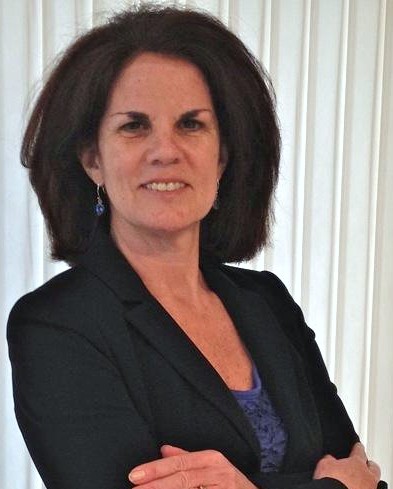Series: Engagement Path #3- Motivate & Guide Me
 April 7, 2010
April 7, 2010  Healthcare organizations are realizing they can leverage technology to help personalize the experience with needed motivation and guidance. Consumers benefit from expert information and tools tailored to their individual goals and interests. These personalized resources not only motivate but also guide the consumer through their “decisions of daily living”. They need guidance when determining how to eat more healthy, improve their fitness as well as manage their stress.
Healthcare organizations are realizing they can leverage technology to help personalize the experience with needed motivation and guidance. Consumers benefit from expert information and tools tailored to their individual goals and interests. These personalized resources not only motivate but also guide the consumer through their “decisions of daily living”. They need guidance when determining how to eat more healthy, improve their fitness as well as manage their stress.
“Help me set realistic fitness goals and give me ongoing feedback on my progress.”
“Just tell me what to do to lose the weight.”
“Keep reminding me about ways to lower my cholesterol.”
“Help me find way to improve my sleep.”
“Motivate & Guide Me” Opportunity: Gain commitment, proactively push to reach goals, deliver actionable information, provide decision support tools and share ongoing feedback.
Engagement in Action:
- Wellcoaches offers a high touch service enabled by technology which puts the consumer in control of their plan and progress towards goals. The Wellcoach continues to hold their client “accountable” for making needed changes to reach these goals. Armed with insight about the consumer’s preferences for exercise and diet, the coach constantly pushes for progress incorporating these preferences into the plan. In addition, the Wellcoach serves as a cheerleader celebrating accomplishments along the way.
- Sensei leverages technology to deliver a personalized experience for weight loss. The “virtual dietician” recommends meals based on the consumer’s stated food preferences and lifestyle. Sensei pushes out the fitness message as a reminder for today’s activity plan “motivational messages” showing progress toward the goal and “behavior” messages to focus the consumer on healthy alternatives. MySensei provides access to tools including a shopping list to motivate healthier food choices.
Motivation is individual and varies based on the consumer’s unique set of health issues and readiness for change at that time. Even consumers who are self-motivated need information and tools to guide them and help them confidently navigate the decisions when coming to a fork in the road.
Most consumers need a more comprehensive solution which responds to triggers for need, delivers personalized information and tracks effectiveness to inform future touches.
Series: Engagement Path #2- Support Me
 April 5, 2010
April 5, 2010 
As social media explodes in healthcare, companies are launching new communities and communication tools to connect consumers with each other and with experts. Research has shown that consumers value learning about and from the experiences of others and receiving emotional support.
Healthcare organizations are building online support communities combined with social media tools, enabling consumers to connect with friends and strangers to share a common bond. Consumers are responding by visiting their channel on YouTube to upload a video about their personal experiences or sharing a comment about a video that moved them. They are on Facebook leaving their “thumbs up” when they like what they see. Consumers are there (virtually) with words of support for those newly diagnosed and those experiencing set- backs.
“I am scared because my child is having problems managing his diabetes at school and I don’t know what to do”.
"My MS is getting worse. I am frightened to speak with others who are further along but would like to reach out to those who are experiencing what I am right now.”
“My family is getting the brunt of my frustrations and I feel terrible.”
“Support Me” Opportunity: Provide the capability to share encouragement, validation and an emotional connection with other people and experts.
Engagement in Action:
These innovative organizations are offering consumers the capabilities to demonstrate their support online.
- Livestrong Facebook community has over 700,000 fans. Community members are extremely engaged posting pictures and comments about their most personal experiences on this very public site. Unlike many communities which have a more limited response, Livestrong is a vibrant community with hundreds of posts sharing thoughts and endless support. Livestrong also engages their community off line through events, further connecting and building bonds between their members.
- TuDiabetes ran a Making Sense of Diabetes program leading up to World Diabetes Day. Members uploaded videos sharing their experiences living with diabetes on a daily basis. Many of these videos received high ratings from the community and comments were shared showing support.
- AARP has launched LifeTuners, an online community for young adults (20s and 30s) offering “unbiased, balanced resources, information and financial advice”. Within the community, consumers are accessing advice and support from experts and their peers and rating the recommendations they read. AARP has built this support community to educate young people about the things they can do now that will impact their future. Notice the parallels with wealth and health.
- MDJunction offers an online community with the ability to share different types of visual messages such as “a hug”, “a cheer up”, “a happy for you”, “a prayer” and “a salute”. Community members can also display one or more than a dozen different color ribbons showing their support from gray for Juvenile Diabetes to black for Melanoma Cancer.
Healthcare companies need to move beyond the basics of setting up different social media destinations and envision integrated offerings that enable consumers to care for one another anytime and anywhere, through online and mobile. They also need to determine the role that the “expert” plays to support and strengthen the community.
Series: Engagement Path #1- Teach Me
 March 31, 2010
March 31, 2010  Most healthcare organizations believe they are effectively providing information to educate consumers about their health. In reality, they are in “broadcast” mode, sending out their communications from many sources in which that are telling “all consumers” about everything.
Most healthcare organizations believe they are effectively providing information to educate consumers about their health. In reality, they are in “broadcast” mode, sending out their communications from many sources in which that are telling “all consumers” about everything.
“They are sending me so many communications and I have such little time to look at them.”
“It is frustrating sorting through all of their health information to find what I need to manage my health”.
“I want sign up to receive certain health alerts on my mobile phone since I am not at my computer very often.”
“Teach Me” Opportunity: Provide a comprehensive yet personalized selection of health education information and tools, that is written at a level that patients can understand, is delivered through online and mobile channels and enables two- way communication.
Engagement in Action:
In order to share different approaches with you, I have selected a few examples which demonstrate how various decision support and social media tools are being utilized to educate the consumer.
- Mayo Clinic has launched their Medical Edge Weekend, online radio show led by specialists discussing selected topics while patients engage through email and twitter to share comments and questions. Mayo also offers “patient friendly” podcasts organized by topics such as “Women’s Health”, “Men’s Health” and “Children’s Health” as well as different conditions.
- American Heart Association has designed the “Profilers” tools to help consumers understand their treatment options. Each question begins with an overview to make sure she is informed before responding. The tool captures personalized information and provides a customized report to share with my doctor for a more in- depth discussion.
- The Eat This Not That tool is designed to teach the consumer about food choices. Consumers are challenged to get the right answer by evaluating the two options placed side by side. With the ticking clock, consumers are rewarded with more points when making the right choice faster. Although the depth of questions in each category (e.g. breakfast, snack, dessert) is not yet available, the tool succeeds in engaging while teaching the consumer about making better food choices.
- CDC has created a FLU IQ Widget which is a tool to test for knowledge for getting and spreading the flu. The widget delivers 10 questions in succession, and gives the correct answer after each one. At the end of the quiz, a final score (out of 10) is displayed along with a message to challenge others which helps spread the learning. This is truly viral!
Each example above offers only a piece of the puzzle. For the full picture, companies need to bring the consumer into the development process and understand their overall need for education from the “outside in”. This insight will help guide the development of a complete solution with new capabilities for communication, collaboration and personalization to “teach” the consumer.
Read about other key engagement drivers:
#2: "Support Me"
#4: "Challenge Me"
#5: "Reward Me"
Leading Consumers to Better Health: Engagement Series Overview
 March 24, 2010
March 24, 2010 
Overwhelmed. Anxious. Confused. Concerned. Conflicted.
And now you are asking me to sign up to attend your online weight loss seminar? Join your online cancer support group? Become a Facebook fan? Follow you on Twitter? Listen to your new podcast on staying healthy? Watch your latest video on risk factors for diabetes? Read your enewsletter loaded with tips for managing my cholesterol? You wonder why I am ignoring you if you are only trying to help me.
How about sending me information about the health issue that is my highest priority? And giving me tools to help me make decisions about which treatment to choose?
Engagement looks very different when viewed through the eyes of the consumer. It is essential for healthcare organizations to gain the consumer’s perspective about ways to engage them before investing their limited resources (money & people) in portals, social media and mobile initiatives.
Although your company can benefit from reading the latest industry research to understand trends and participation in these emerging technologies, your set of customers are very different than the general populations surveyed. Your customers have a unique demographic, set of health needs and technology comfort. You must understand their evolving needs before determining the steps to engage them.
In this series, I will lead you down different paths to see how innovative organizations are engaging their target consumers in their health.
Discovering New Paths for Engagement...
 March 22, 2010
March 22, 2010 
Innovation is occurring all around us. Companies are actively exploring new ways to engage the consumers. They are "testing" eHealth solutions targeted to different audiences and are learning what is required to get consumers to participate in their own health. These companies are borrowing approaches from various industries as they "package" and deliver needed capabilities to consumers through the appropriate channels. With effective online tools and personalized information, companies are influencing the consumer's "decisions of daily living" and impacting their behavior to achieve better health.
Over the past ten years in the health technology industry, I have built a network of colleagues who are also passionate about the consumer. Through this blog, I will be tapping into my network to bring new perspectives into the changes that are driving our market. And during my ongoing discovery into innovative offerings, I will "connect the dots" and synthesize the value of these products for the consumer as well as share new and thought provoking ideas to get you thinking about what is to come. I invite you to come along for the journey...


